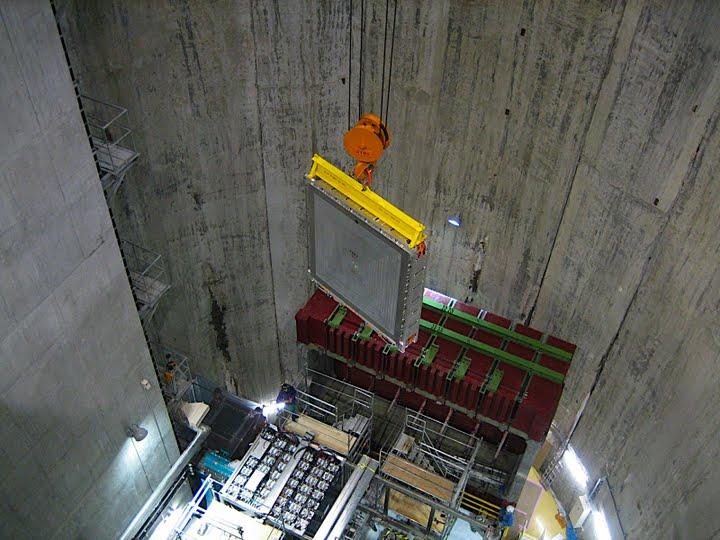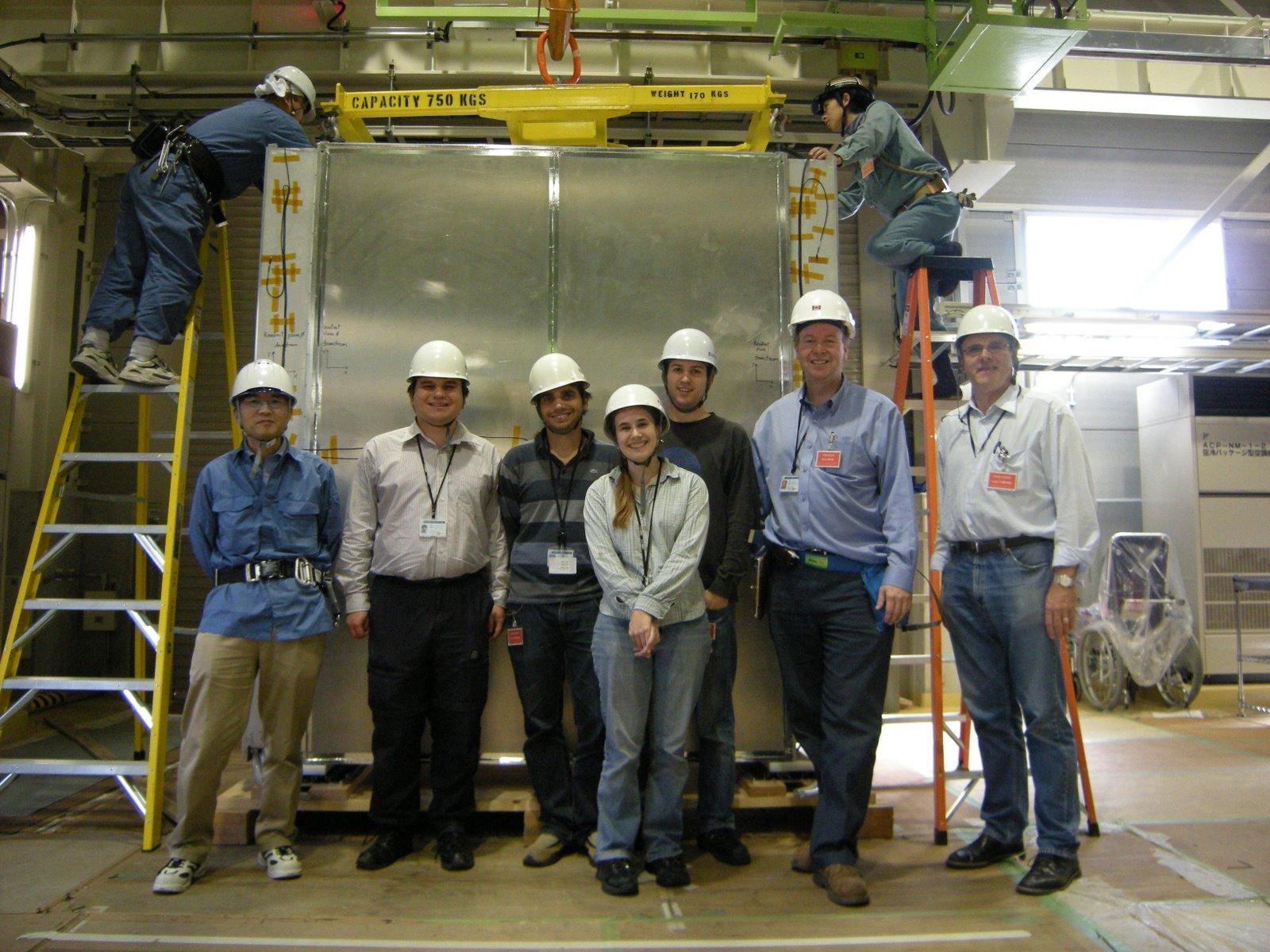The Canadian group associated with the T2K (Tokai to Kamioka) neutrino experiment in Japan achieved a major milestone on October 6, 2009, with the installation of the first of two fine-grained detectors (FGDs). The second FGD is now also in place.
Neutrinos are nearly massless subatomic particles which interact very weakly with matter. There are three types, or flavours, of neutrinos, and as shown by the Sudbury Neutrino Observatory, they can oscillate from one flavour to another. The T2K experiment will study these oscillations in unprecedented detail.
Each FGD consists of several modules of scintillating bars; each module contains 384 bars. The bars are approximately 2 m long with a 1 cm x 1 cm cross section. A neutrino interacting in a bar will create a burst of light that will be conducted to the end of the bar by a wavelength-shifting fiber where it will be recorded by a light sensing detector. The electronics associated with reading out this detector were designed by TRIUMF physicists and engineers. The bars were fabricated by local industry, Celco Plastics, Ltd., in Surrey.
Operational tests of the FGDs will now be conducted making use of cosmic rays. The experiment is scheduled to start taking data in December.
T2K Canada consists of groups at TRIUMF, Victoria, UBC, Alberta, Regina, York, and Toronto. The T2K collaboration includes groups from Japan, Canada, the US, Europe, and Russia.
The photo shows the first FGD being lowered into position.
Time Projection Chambers for T2K Installed at JPARC
On October 9 two large Time Projection Chambers constructed at TRIUMF were successfully installed into the near detector for the T2K experiment.
The experiment will provide the most detailed look at neutrino oscillations, and the TPCs will play an important role in understanding this phenomenon. The TPCs will provide full 3D tracking of charged particles produced in interactions in the Fine Grained Detectors, also constructed at TRIUMF. There are a number of innovative aspects in the TPC design such as the use of composite panels for a double box construction.
This is the first large scale TPC to use micro-pattern gas detectors for gas amplification instead of wire chambers, making it a "wireless TPC". The micromegas detectors and readout electronics were provided by French collaborators at SACLAY. The detector includes a photoelectron calibration system activated by pulsed UV light from a laser. A sophisticated gas control system, designed and built at TRIUMF, has also been installed. Over the next several weeks, the TPCs will be commissioned to be ready for the first neutrino beam data later this year.
TPC team at J-PARC in front of TPC, October 9
-- Rich Helmer, Engineering Physicist


